#ヒ��リ
Explore tagged Tumblr posts
Text
0 notes
Text
0 1 2 3 4 5 6 7 8 9 A B C D E F G H I J K L M N O P Q R S T U V W X Y Z А Б В Г Д Е Ж З И Й К Л М Н О П Р С Т У Ф Х Ц Ч Ш Щ Ъ Ы Ь Э Ю Я Ѐ Ё Ђ Ѓ Є Ѕ Ї Ј Љ Њ Ћ Ќ Ѝ Ў Џ Ѡ Ѣ Ѥ Ա Բ Գ Դ Ե Զ Է Ը Թ Ժ Ի Լ Խ Ծ Կ Հ Ձ Ղ Ճ Մ Յ Ն Շ Ո Չ Պ Ջ Ռ Ս Վ Տ Ր Ց Ւ Փ Ք Օ Ֆ ֏ ᚠ ᚡ ᚢ ᚣ ᚤ ᚥ ᚦ ᚧ ᚨ ᚩ ᚪ ᚫ ᚬ ᚭ ᚮ ᚯ ᚰ ᚱ ᚲ ᚳ ᚴ ᚵ ᚶ ᚷ ᚸ ᚹ ᚺ ᚻ ᚼ ᚽ ᚾ ᚿ ᛀ ᛁ ᛂ ᛃ ᛄ ᛅ ᛆ ᛇ ᛈ ᛉ ᛊ ᛋ ᛌ ᛍ ᛎ ᛏ ᛐ ᛑ ᛒ ᛓ ᛔ ᛕ ᛖ ᛗ ᛘ ᛙ ᛚ ᛛ ᛜ ᛝ ᛞ ᛟ ᛠ ᛡ ᛢ ᛣ ᛤ ᛥ ᛦ ᛧ ᛨ ᛩ ᛪ ᛫ ᛬ ᛭ ᛮ ᛯ ᛰ Ⰰ Ⰱ Ⰲ Ⰳ Ⰴ Ⰵ Ⰶ Ⰷ Ⰸ Ⰹ Ⰺ Ⰻ Ⰼ Ⰽ Ⰾ Ⰿ Ⱀ Ⱁ Ⱂ Ⱃ Ⱄ Ⱅ Ⱆ Ⱇ Ⱈ Ⱉ Ⱊ Ⱋ Ⱌ Ⱍ Ⱎ Ⱏ Ⱐ Ⱑ Ⱒ Ⱓ Ⱔ Ⱕ Ⱖ Ⱗ Ⱘ Ⱙ Ⱚ Ⱛ Ⱜ Ⱝ Ⱞ Ⴀ Ⴁ Ⴂ Ⴃ Ⴄ Ⴅ Ⴆ Ⴇ Ⴈ Ⴉ Ⴊ Ⴋ Ⴌ Ⴍ Ⴎ Ⴏ Ⴐ Ⴑ Ⴒ Ⴓ Ⴔ Ⴕ Ⴖ Ⴗ Ⴘ Ⴙ Ⴚ Ⴛ Ⴜ Ⴝ Ⴞ Ⴟ Ⴡ Ⴢ Ⴣ Ⴤ Ⴥ Ⴧ Ⴭ あ い う え お か が き ぎ く ぐ け げ こ ご さ ざ し じ す ず せ ぜ そ ぞ た だ ち ぢ つ づ て で と ど な に ぬ ね の は ば ぱ ひ び ぴ ふ ぶ ぷ へ べ ぺ ほ ぼ ぽ ま み む め も や ゆ よ ら り る れ ろ わ ゐ ゑ を ん ゔ ゞ ゟ ア イ ウ エ オ カ ガ キ ギ ク グ ケ ゲ コ ゴ サ ザ シ ジ ス ズ セ ゼ ソ ゾ タ ダ チ ヂ ツ ヅ テ デ ト ド ナ ニ ヌ ネ ノ ハ バ パ ヒ ビ ピ フ ブ プ ヘ ベ ペ ホ ボ ポ マ ミ ム メ モ ャ ヤ ユ ヨ ラ リ ル レ ロ ワ ヰ ヱ ヲ ン ヴ ヵ ヷ ヸ ヹ ヺ ㄅ ㄆ ㄇ ㄈ ㄉ ㄊ ㄋ ㄌ ㄍ ㄎ ㄏ ㄐ ㄑ ㄒ ㄓ ㄔ ㄕ ㄖ ㄗ ㄘ ㄙ ㄚ ㄛ �� ㄝ ㄞ ㄟ ㄠ ㄡ ㄢ ㄣ ㄤ ㄥ ㄦ ㄧ ㄨ ㄩ ㄪ ㄫ ㄬ ㄭ ㆠ ㆡ ㆢ ㆣ ㆤ ㆥ ㆦ ㆧ ㆨ ㆩ ㆪ ㆫ ㆬ ㆭ ㆮ ㆯ ㆰ ㆱ ㆲ ㆳ 𐌰 𐌱 𐌲 𐌳 𐌴 𐌵 𐌶 𐌷 𐌸 𐌹 𐌺 𐌻 𐌼 𐌽 𐌾 𐌿 𐍀 𐍁 𐍂 𐍃 𐍄 𐍅 𐍆 𐍇 𐍈 𐍉 𐍊 𐐀 𐐁 𐐂 𐐃 𐐄 𐐅 𐐆 𐐇 𐐈 𐐉 𐐊 𐐋 𐐌 𐐍 𐐎 𐐏 𐐐 𐐑 𐐒 𐐓 𐐔 𐐕 𐐖 𐐗 𐐘 𐐙 𐐚 𐐛 𐐜 𐐝 𐐞 𐐟 𐐠 𐐡 𐐢 𐐣 𐐤 𐐥 𐐦 𐐧 𛀁
idk just thought of the twitter bot that used code to assign every unicode symbol a meaning and thus created a hyper-compact writing system that could get a incredibly high amounts of info compressed into a short message. that counts as a megascript to me so all i'm doing is pondering the magic.
16 notes
·
View notes
Text
Symbols for The Sims 4 Gallery 🌟

Please note: The symbols displayed here on Tumblr might appear differently on the Sims 4 gallery. To see their true appearance, copy and paste them directly into the gallery description. Misc : ♨ ☏ ☎ ⚒ ⛘ ♠ ♥ ♣ ★ ☆ ♡ ♤ ♧ ♩ ♪ ♬ ♭ ♯ ♂ ♀ ※ † ‡ § ¶ 冏 웃 유 ⚉ 쓰 ヅ ツ 〠 ☜ ☞ † ↑ ↓ ◈ ◀ ▲ ▼ ▶ ◆◇◁ △ ▽ ▷ ◙ ◚ ◛ ▬ ▭ ▮ ▯ ▦ Ω ◴ ◵ ◶ ◷ ⬢ ⬡ ▰ ◊ ⬟ ⬠ ∝ ∂ ∮ ∫ ∬ ∞ √ ≠ ± × ÷ 兀 ∏ ㄇ П п ∏ Π π $ ¢ € £ ¥ ₩ ₹ ¤ ƒ ฿ Ł Ð ◸ ◹ ◺ ◿ ◢ ◣ ◤ ◥ ◠ ◡ Shapes : □ ■ ▒ ▓ █ ▄ ▌ ▧ ▨ ▩ ▒ ■ □ ▢ ▣◃ ▤ ▥ ░ ▁ ▂ ▃ ▄ ▅ ▆ ▇ █ ▉ ▊ ▋ ▋ ▌ ▍ ▎ ∇ ▵ ⊿ °○ ● ⊕ º • 。 ○ ◯ O ⓞ ◎ ⊙▹
Arrows : ⇧ ⇒ ↹ ↘︎ ↗︎ ↙ �� ↕ ↔ ︿ ﹀ ︽ ︾ ← → ⇔ ↸ Brackets: 〖 〗 〘 〙 〈 〉 《 》 「 」 『 』 【 】 〔 〕 ︵ ︶ ︷ ︸ ︹ ︺ ︻ ︼ ︽ ︾ ︿ ﹀ ﹁ ﹂ ﹃ ﹄ ﹙ ﹚ ﹛ ﹜ ﹝ ﹞ ﹤ ﹥ ( ) < > { } ‹ › « » 「 」 ≪ ≫ ≦ ≧ [ ] ⊆ ⊇ ⊂ ⊃ Lines: ☰ ≡ Ξ – — ▏ ▕ ╴ ‖ ─ ━ │ ┃ ‒ ― ˍ ╋ ┌ ┍ ┎ ┏ ┐ ┑ ┒ ┓ └ └ ┕ ┖ ┗ ┘ ┙ ┚ ┛ ├ ├ ┝ ┞ ┟ ┠ ┡ ┢ ┣ ┤ ┥ ┦ ┧ ┨ ┩ ┪ ┫ ┬ ┭ ┮ ┯ ┰ ┱ ┲ ┳ ┴ ┵ ┶┷ ┸ ┹ ┺ ┻ ┼ ┽┾ ┿ ╀ ╁ ╂ ╃╄ ╅ ╆ ╇╈ ╉ ═ ║ ╒ ╓ ╔ ╔ ╔ ╕ ╕ ╖ ╖ ╗ ╗ ╘ ╙ ╚ ╚ ╛ ╛ ╜ ╜ ╝ ╝╞ ╟╟ ╠ ╡ ╡ ╢ ╢ ╣ ╣ ╤ ╤ ╥ ╥╦ ╦ ╧╧ ╨ ╨ ╩ ╩ ╪ ╪ ╫ ╬ ╱ ╲ ╳ Χ χ × ╭ ╮ ╯ ╰ ∧ ∨ ¦ ⊥¬ ∠ Punctuation: ‼ … ∷ ′ ″ ˙ ‥ ‧ ‵ 、 ﹐ ﹒ ﹔ ﹕ ! # $ %‰ & , . : ; ? @ ~ · . ᐟ ¡ ¿ ¦ ¨ ¯ ´ · ¸ ˉ ˘ ˆ ` ˊ ‵ 〝 〞 〟〃 " '′ ″ ‴ ‘’ ‚ ‛“ ” „ ‟ " '* ﹡* ⁂ ∴ ∵ Letters : © ® ℗ ∨ ㎖ ㎗ ㎘ ㏄ ㏖ ㏒ μ ℃ ℉ ㎍ ㎎ ㎏ ㎈ ㎉ ㎐ ㎑ ㎒ ㎓ ㎾ ㏑ ㏈ ㏐ ㏂ ㏘ ㎳ ㎭ ㏅ ㎪ ㎚ ㎛ ㎜ ㎝ ㎞ № ü ◂ ▾ ▿ ▸ ▴ ◖ ◗ ρ ∀ ∃ α β γ δ ε μ φ π σ θ ∈ ∑ ⁿ Α Β Γ Δ Ε Ζ Η Θ Ι Κ Λ Μ Ν Ξ Ο Π Ρ Σ Τ Υ Φ Χ Ψ Ω α β γ δ ε ζ η θ ι κ λ μ ν ξ ο π ρ ς σ τ υ φ χ ψ ω Æ Á   À Å Ã Ä Ç Ð É Ê È Ë Í Î Ì Ï Ñ Ó Ô Ò Ø ÕÖ Þ Ú Û Ù Ü Ý á â æ à å ã ä ç é ê è ð ë í î ì ï ñ ó ô ò ø õ ö ß þ ú û ù ü ý ÿ Ā ā Ă ă Ą ą Ć ć Ĉ ĉ Ċ ċ Č č Ď ď Đ đ Ē ē Ĕ ĕ Ė ė Ę ę Ě ě Ĝ ĝ Ğ ğ Ġ ġ Ģ ģ Ĥ ĥ Ħ ħ Ĩ ĩ Ī ī Ĭ ĭ Į į İ ı IJ ij Ĵ ĵ Ķ ķ ĸ Ĺ ĺ Ļ ļ Ľ ľ Ŀ ŀ Ł ł Ń ń Ņ ņ Ň ň Ŋ ŋ Ō ō Ŏ ŏ Ő ő Œ œ Ŕ ŕ Ŗ ŗ Ř ř Ś ś Ŝ ŝ Ş ş Š š Ţ ţ Ť ť Ŧ ŧ Ũ ũ Ū ū Ŭ ŭ Ů ů Ű ű Ų ų Ŵ ŵ Ŷ ŷ Ÿ Ź ź Ż ż Ž ž ſ ʼn ⓐ ⓑ ⓒ ⓓ ⓔ ⓕ ⓖ ⓗ ⓘ ⓙ ⓚ ⓛ ⓜ ⓝ ⓞ ⓟ ⓠ ⓡ ⓢ ⓣ ⓤ ⓥ ⓦ ⓧ ⓨ ⓩ Numbers : ① ② ③ ④ ⑤ ⑥ ⑦ ⑧ ⑨ ⑩ ⑴ �� ⑶ ⑷ ⑸ ⑹ ⑺ ⑻ ⑼ ⑽ 0 1 2 3 4 5 6 7 8 9 Ⅰ Ⅱ Ⅲ Ⅳ Ⅴ Ⅵ Ⅶ Ⅷ Ⅸ Ⅹ ⅰ ⅱ ⅲ ⅳ ⅴ ⅵ ⅶ ⅷ ⅸ ⅹ ½ ⅓ ⅔ ¼ ¾ ⅛ ⅜ ⅝ ⅞ ₁ ₂ ₃ ₄ ¹ ² ³ ⁴ Japanese : ぁ あ ぃ い ぅ う ぇ え ぉ お か が き ぎ く ぐ け げ こ ご さ ざ し じ す ず せ ぜ そ ぞ た だ ち ぢ っ つ づ て で と ど な に ぬ ね の は ば ぱ ひ び ぴ ふ ぶ ぷ へ べ ぺ ほ ぼ ぽ ま み む め も ゃ や ゅ ゆ ょ よ ら り る れ ろ ゎ わ ゐ ゑ を ん ゝ ゞ ァ ア ィ イ ゥ ウ ェ エ ォ オ カ ガ キ ギ ク グ ケ ゲ コ ゴ サ ザ シ ジ ス ズ セ ゼ ソ ゾ タ ダ チ ヂ ッ ツ ヅ テ デ ト ド ナ ニ ヌ ネ ノ ハ バ パ ヒ ビ ピ フ ブ プ ヘ ベ ペ ホ ボ ポ マ ミ ム メ モ ャ ヤ ュ ユ ョ ヨ ラ リ ル レ ロ ヮ ワ ヰ ヱ ヲ ン ヴ ヵ ヶ ヷ ヸ ヹ ヺ ・ ヲ ァ ィ ゥ ェ ォ ャ ュ ョ ッ ー ア イ ウ エ オ カ キ ク ケ コ サ シ ス セ ソ タ チ ツ テ ト ナ ニ ヌ ネ ノ ハ ヒ フ ヘ ホ マ ミ ム メ モ ヤ ユ ヨ ラ リ ル レ ロ ワ ン゙゚ ㍻ ㍼ ㍽ ㍾ ゛ ゜ ・ ー ヽ ヾ 々 〒 〃 ※ 〆 Korean : ㄱ ㄲ ㄳ ㄴ ㄵ ㄶ ㄷ ㄸ ㄹ ㄺ ㄻ ㄼ ㄽ ㄾ ㄿ ㅀ ㅁ ㅂ ㅃ ㅄ ㅅ ㅆ ㅇ ㅈ ㅉ ㅊ ㅋ ㅌ ㅍ ㅎ ㅏ ㅐ ㅑ ㅒ ㅓ ㅔ ㅕ ㅖ ㅗ ㅘ ㅙ ㅚ ㅛ ㅜ ㅝ ㅞ ㅟ ㅠ ㅡ ㅢ ㅣ ㈀ ㈁ ㈂ ㈃ ㈄ ㈅ ㈆ ㈇ ㈈ ㈉ ㈊ ㈋ ㈌ ㈍ ㈎ ㈏ ㈐ ㈑ ㈒ ㈓ ㈔ ㈕ ㈖ ㈗ ㈘ ㈙ ㈚ ㈛ ㈜ ㉠ ㉡ ㉢ ㉣ ㉤ ㉥ ㉦ ㉧ ㉨ ㉩ ㉪ ㉫ ㉬ ㉭ ㉮ ㉯ ㉰ ㉱ ㉲ ㉳ ㉴ ㉵ ㉶ ㉷ ㉸ ㉹ ㉺ ㉻ ₩ ㉿ ー
5 notes
·
View notes
Text
[162] いろは唄
youtube
いろは唄 銀サク いろは唄
【歌詞】
アナタガ望ムノナラバ 犬ノヤウニ従順ニ 紐ニ縄ニ鎖ニ 縛ラレテアゲマセウ
アルイハ子猫ノヤウニ 愛クルシクアナタヲ 指デ足デ唇デ 喜バセテアゲマセウ
どちらが先に 溺れただとか そんなこと どうでもいいの
色は匂へど 散りぬるを 我が世誰ぞ 常ならん 知りたいの もっともっと深くまで
有為の奥山 今日越えて 浅き夢見じ 酔ひもせず 染まりましょう アナタの色 ハニホヘトチリヌルヲ
例ヘバ椿ノヤウニ 冬ニ咲ケト云フナラ 雪ニ霜ニ身体ヲ 晒シテ生キマセウ
アルイハ気高ヒ薔薇ノ 散リ際ガ見タヒナラ 首ニ髪ニ香リヲ 纏ワセテ逝キマセウ
骨の髄まで 染まってもまだ それだけじゃ 物足りないの
色は匂へど 散りぬるを 我が世誰ぞ 常ならん 知りたいの もっともっと深くまで
有為の奥山 今日越えて 浅き夢見じ 酔ひもせず 変わりましょう アナタの為に 嗚呼
色は匂へど 散りぬるを 我が世誰ぞ 常ならん 知りたいの もっともっと深くまで
有為の奥山 今日越えて 浅き夢見じ 酔ひもせず 堕ちましょう アナタと イロハニホヘト ドコマデモ。
【雜談】
「你都點什麼歌?」
老天這問題的難度僅次於「你喜歡什麼歌?」和「你喜歡哪個歌手?」
你來自何處?你心底懷抱著什麼樣的信仰?你看見什麼樣的風景?這般萬法歸一的凝煉。頂多是加上一份「在KTV點得到」的bias,但是其實也沒有偏多少。我喜歡成龍很酷,我喜歡記憶之海,我喜歡贗作森林,我喜歡青春西空,我喜歡猛烈宇宙交響曲,我喜歡津輕海峽冬景色,好喔,這些東西要怎麼凝煉?
好喔
不好
根本沒得萃取,真的是一歸何處,你講到最後只能用青州衫胡混過去,說不定青州衫還算是比較好的解答,也許它經過傅立葉轉換可以逼近真理,而我端出來的伊呂波、Sexy Sexy,、加賀岬反而是距離終點比較遠的解答也說不定。
又或許是我多慮了。
但是我學乖了,我不會丟親近的父親給人家,
反正沒得唱。
「如果有得唱呢?」
「我…!」
0 notes
Text
Hiragana and Katakana / ひらがな、カタカナ
There are 3 types of characters in Japanese - Hiragana, Katakana, and Kanji.
Hiragana(ひらがな) is the easiest to read, and every sentence can be written in it, just like alphabet in English, even if we don't know correct Kanji.
Katakana(カタカナ) is another version of Hiragana, used for the words from foreign countries. For example, we write "ケーキ"(from "cake" in English) or "パン"(from "pão" in Portuguese, which means "bread" in English) as both didn't originally exist in Japan.
Kanji was brought from China, of course, and were developed as Japanese characters. Each Kanji has each meaning, so it makes us easier to understand what it exactly means. For example, when we see "いし", we don't know what it means because we have many words of the same sound ;石(stone), 意思(intention), 医師(doctor), etc.
Japanese sentences are made up of a mixture of these three types of characters.
Hereunder you can see the list of Hiragana and Katakana.
基本ひらがな(Basic Hiragana)
-for keyboard input-
あ(A) い(I) う(U) え(E) お(O)
か(Ka) き(Ki) く(Ku) け(Ke) こ(Ko)
さ(Sa) し(Shi) す(Su) せ(Se) そ(So)
た(Ta) ち(Chi) つ(Tsu) て(Te) と(To)
な(Na) に(Ni) ぬ(Nu) ね(Ne) の(No)
は(Ha) ひ(Hi) ふ(Fu) へ(He) ほ(Ho)
ま(Ma) み(Mi) む(Mu) め(Me) も(Mo)
や(Ya) ゆ(Yu) よ(Yo)
ら(Ra) り(Ri) る(Ru) れ(Re) ろ(Ro)
わ(Wa) を(Wo)
ん(N)
As for pronunciation...
orange colored characters are sometimes different from the original sounds.(は may be pronounced "Wa", へ may be "E", and it depends on how to use the character in the sentence.)
Red colored ones are completely different.(を is always pronounced "o", not "wo".)
濁音(Daku-on)~濁点付き(With ゛ Dakuten)
が(Ga) ぎ(Gi) ぐ(Gu) げ(Ge) ご(Go)
ざ(Za) じ(Ji) ず(Zu) ぜ(Ze) ぞ(Zo)
だ(Da) ぢ(Di) づ(Du) で(De) ど(Do)
ば(Ba) び(Bi) ぶ(Bu) べ(Be) ぼ(Bo)
Pronunciation : ぢ="Dzi" or "Ji"
づ="Dzu" or "Zu"
半濁音(Han-dakuon)~���濁点付き(With ゜Han-
dakuten)
ぱ(Pa) ぴ(Pi) ぷ(Pu) ぺ(Pe) ぽ(Po)
拗音(You-on)
きゃ(Kya) きゅ(Kyu) きょ(Kyo)
ぎゃ(Gya) ぎゅ(Gyu) ぎょ(Gyo)
しゃ(Sha) しゅ(Shu) しょ(Sho)
じゃ(Ja) じゅ(Ju) じょ(Jo)
ちゃ(Cha) ちゅ(Chu) ちょ(Cho)
ぢゃ(Dya) ぢゅ(Dyu) ぢょ(Dyo)
にゃ(Nya) にゅ(Nyu) にょ(Nyo)
ひゃ(Hya) ひゅ(Hyu) ひょ(Hyo)
びゃ(Bya) びゅ(Byu) びょ(Byo)
ぴゃ(Pya) ぴゅ(Pyu) ぴょ(Pyo)
みゃ(Mya) みゅ(Myu) みょ(Myo)
りゃ(Rya) りゅ(Ryu) りょ(Ryo)
Pronunciation : ぢゃ= "Dza" or "Ja"
ぢゅ="Dzu" or "Ju"
ぢょ="Dzo" or "Jo"
促音(Soku-on)= っ 小さい「つ」(Small“tsu”)
There is no romaji for single small “っ”,
because we add one more next character,
like きって=Kitte , or はっぱ=Happa.
基本カタカナ(Basic Katakana)
Pronunciation is completely same as Hiragana and please read above in detail.
ア(A) イ(I) ウ(U) エ(E) オ(O)
カ(Ka) キ(Ki) ク(Ku) ケ(Ke) コ(Ko)
サ(Sa) シ(Shi) ス(Su) セ(Se) ソ(So)
タ(Ta) チ(Chi) ツ(Tsu) テ(Te) ト(To)
ナ(Na) ニ(Ni) ヌ(Nu) ネ(Ne) ノ(No)
ハ(Ha) ヒ(Hi) フ(Fu) ヘ(He) ホ(Ho)
���(Ma) ミ(Mi) ム(Mu) メ(Me) モ(Mo)
ヤ(Ya) ユ(Yu) ヨ(Yo)
ラ(Ra) リ(Ri) ル(Ru) レ(Re) ロ(Ro)
ワ(Wa) ヲ(Wo)
ン(N)
濁音(Daku-on)~濁点付き(With ゛ Dakuten)
ガ(Ga) ギ(Gi) グ(Gu) ゲ(Ge) ゴ(Go)
ザ(Za) ジ(Ji) ズ(Zu) ゼ(Ze) ゾ(Zo)
ダ(Da) ヂ(Di) ヅ(Du) デ(De) ド(Do)
バ(Ba) ビ(Bi) ブ(Bu) ベ(Be) ボ(Bo)
半濁音(Han-dakuon)~半濁点付き(With ゜
Han-dakuten)
パ(Pa) ピ(Pi) プ(Pu) ペ(Pe) ポ(Po)
拗音(You-on)
キャ(Kya) キュ(Kyu) キョ(Kyo)
ギャ(Gya) ギュ(Gyu) ギョ(Gyo)
シャ(Sha) シュ(Shu) ショ(Sho)
ジャ(Ja) ジュ(Ju) ジョ(Jo)
チャ(Cha) チュ(Chu) チョ(Cho)
ヂャ(Dya) ヂュ(Dyu) ヂョ(Dyo)
ニャ(Nya) ニュ(Nyu) ニョ(Nyo)
ヒャ(Hya) ヒュ(Hyu) ヒョ(Hyo)
ビャ(Bya) ビュ(Byu) ビョ(Byo)
ピャ(Pya) ピュ(Pyu) ピョ(Pyo)
ミャ(Mya) ミュ(Myu) ミョ(Myo)
リャ(Rya) リュ(Ryu) リョ(Ryo)
促音(Soku-on)= ッ 小さい「ツ」(Small “tsu”)
0 notes
Text
I started learning katakana, which is used for foreign words, names, and onomatopoeia. Just like hiragana, katakana has 46 characters. Here’s the complete list with their pronunciations:
Character Pronunciation
ア a
イ i
ウ u
エ e
オ o
カ ka
キ ki
ク ku
ケ ke
コ ko
サ sa
シ shi
ス su
セ se
ソ so
タ ta
チ chi
ツ tsu
テ te
ト to
ナ na
ニ ni
ヌ nu
ネ ne
ノ no
ハ ha
ヒ hi
フ fu
ヘ he
ホ ho
マ ma
ミ mi
ム mu
メ me
モ mo
ヤ ya
ユ yu
ヨ yo
ラ ra
リ ri
ル ru
レ re
ロ ro
ワ wa
ヲ wo
ン n
I’ve been practicing these characters using flashcards and writing them out.
I’m getting the hang of it and it’s pretty fun seeing how different words are written in katakana. More updates coming soon as I dive into kanji for my final project!
0 notes
Text
役者紹介(解読不可能ver)
・たぴおか☆たぴえもん
闇ニ覆ハレシカノ国、来タル予言ノ時、救世ノ鐘ガ鳴ル。賢者ハ云フ、汝ノ道ハ示サレタ。狭キ道、昇リ征ク黒キ真球。褐色ノ海、時代ノ波ニ飲マレシ者。
・おかざき☆ひとみ
金糸雀色染マリシ霊峰、ソノ頭顱燃エ盛リ焦土トナラン。霊長支配セシ神々ノ在処。
・okmc
英霊魂トナリテ此処ニ帰ル。去リシ日ノ記憶拋チタル者ノミ此ノ先ヘ進ムベシ。
・統括のフォーニャー
匹夫瞠目シテソノ姿捉フ。艶色ナル容貌、匹夫寸刻ノ後、捕ラへラル。妖ノ儕輩。轍鮒ノ急。
・じゃがりーた三世
俗物ヲ籠絡セシ鏡、偽ヲ写シ真実ヲ隠ス。紅ク染マリ、仄カニ薫ル。
・緒田舞里
灼灼、耀フ燭。勇者ノ道ヲ示ス。舞ヒ踊ル婦女子ノ精。
・三一三
鎧散開シ、狼狽ス。克己心持タズ。色メク幻想ノ情人。彷徨セシ憐レナル旅人。

・舞原舞宙
世ノ理動カズ。座シテ福音ヲ待ツノミ。
・田中響子
信心ノ意ヲ示サレヨ。分陰ノ安息ヲ憩フ。母ナル大地ノ祝福。
・アリリ・オルタネイト
眩暈齎ス童女。言ノ葉ヲ統ベリシ妃。猫ヲ愛ス。
・夕暮児
総テノ災ヒ此処ニ在リ。禍言操リテ、皆信ヲ失フ。苛虐ナル毒巣。悪辣極マル乱賊ノ首魁。勇者此ノ大悪ヲ討チ取リテ伝説トナラン。
1 note
·
View note
Text
Languages of the world
Ainu (アイヌ・イタㇰ/Ainu-itak)
Basic facts
Number of native speakers: 5
Spoken in: Japan, Russia
Script: Katakana, 81 letters/Latin, 81 letters
Grammatical cases: 6
Linguistic typology: agglutinative, SOV
Language family: Ainu
Number of dialects: 3
History
1994 - the last speaker of one of the dialects dies
2008 - the Japanese government recognizes Ainu as an indigenous language
Writing system and pronunciation
These are the letters that make up the Katakana script: ア イ ウ エ オ カ キ ク ケ コ ㇰ サ シ ス セ ソ ㇲ タ ツ゚ テ ト ツ チ ャ チ ツ チャ チ ツ セ゚ チョ ナ ニ ヌ ネ ノ ㇴ/ン ハ ヒ フ ヘ ホ ㇵ ㇶ ㇷ ㇸ ㇹ��パ ピ プ ペ ポ ㇷ゚ マ ミ ム メ モ ㇺ ヤ ユ イェ ヨ ラ リ ル レ ロ ㇻ ㇼㇽ ㇾ ㇿ ㇽ ワ ウィ/ヰ ウェ/ヱ ウォ/ヲ.
These are the letters that make up the Latin script: a c e h i k m n o p r s t u y w.
There are few consonant clusters, but when one appears, it is written using the syllable character followed by the character for the single consonant. For example, ikka is イㇰカ (i-k-ka).
Ainu has a pitch accent system used in words containing affixes. The high pitch is placed on the first syllable of the stem if it is long or on the second syllable if the former is short.
Grammar
Nouns have two genders (masculine and feminine), two numbers (singular and plural), and six cases (dative, instrumental, comitative, locative, allative, and ablative). However, these are not marked directly on the noun, but using other words that follow them.
Ainu uses postpositions. Adverbs are formed adding suffixes to adjectives.
Verbs are conjugated for tense, aspect, person, number, case, and valency.
Dialects
There used to be three dialects: Hokkaido, Sakhalin, and Kuril. The only one that survives is Hokkaido Ainu, with which the latter two were not mutually intelligible. They differed in phonology and lexicon.
119 notes
·
View notes
Text
What did I do with my Friday night, you may ask?
Half-assed a Ferengi katakana font, is what. Yeah, I'm what you'd call...pretty cool.

Deets below:
So it turns out the phonemes for the Ferengi character set (ganked from LCARS47.com) map fairly well onto katakana? With some notable exceptions. A lot of phonemes map 1:1 very nicely, but there are spots where Ferengi sounds mush together (ta/da, for example) where the kana make them distinct タダ (ta and da respectively).
There are also sounds that aren't present in Japanese that are distinct in the Ferengi that necessitated some counterintuitive mapping. All the Ferengi l- sounds map onto the z- dakuon, for instance. Ferengi z-sounds already lump into the s-/z-/sh- group, which left the z- dakuon free.
So, Leeta would be リタ ri ta in actual katakana. But to type her name in Ferengi, you have to spell it ジタ (ji ta) to give you "li ta".
For another example, to spell Garak: ガラク ga ra ku. But k- and g- sounds are grouped in Ferengi, so instead it's spelled ka ra ku.
And that left the g- dakuon free to use for the q- sounds that don't exist in katakana, so Quark, in katakana, would need to be クワルク ku wa ru ku. But in this Ferengi font it's spelled ga ru ku, which looks a lot closer to English Garak, doesn't it? ¯\_(ツ)_/¯
Ferengi doesn't appear to have terminal consonants going by the chart, so sounding out words feels eerily familiar to spelling in katakana. Maybe they clip off the vowel at the end, ~desu~ style.
Still, it's pretty fun to play with as an English cipher or for names and decorative nonsense. Here's a screenshot of my mucking around. From left to right: original word - Ferengi phonemes - what to type while in full-width katakana input mode - final result.
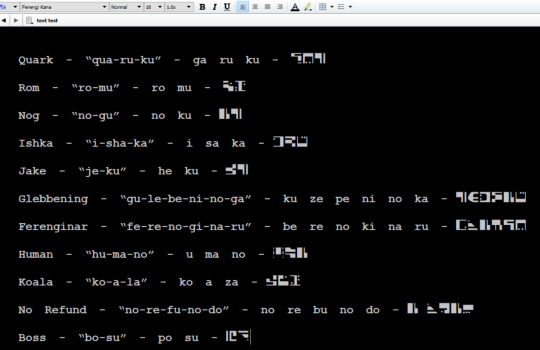
And here's the full mapping of phonemes to kana. You can see where I had to make some allowances. It's possible there's a different writing system that fits better, or a better way to map onto katakana, but this is as well as I can do with my "occasionally fucks around on duolingo" level of expertise, lol.
assigned phonemes: mapped kana:
a/ha a ア
i/hi i イ
u/hu u ウ
e/he e エ
o/ho o オ
ka/ga ka カ
ki/gi ki キ
ku/gu ku ク gu グ
ke/ge ke ケ
ko/go ko コ
sa/za/sha sa サ
si/zi/shi shi シ
su/zu/shu su ス
se/ze/she se セ
so/zo/sho so ソ
ta/da/tha ta タ da ダ
ti/di/thi hi ヒ
te/de/the te テ
tu/du/thu tsu ツ
to/do/tho to ト
na na ナ
ni ni ニ
ne ne ネ
nu nu ヌ
no no ノ n n
ma ma マ
mi mi ミ
me me メ
mu mu ム
mo mo モ
ya ya ヤ
ye yu ユ
yo yo ヨ
ra ra ラ
ri ri リ
re re レ
ru ru ル
ro ro ロ
wa wa ワ
wi do ド
we de デ
wo wo ヲ
pa/ba pa パ
pi/bi pi ピ
pe/be pe ペ
pu/bu pu プ
po/bo po ポ
fa/va ba バ
fi/vi bi ビ
fe/ve be ベ
fu/vu bu ブ
fo/vo bo ボ
cha/ja ha ハ
chi/ji chi チ
che/je he ヘ
chu/ju fu/hu フ
cho/jo ho ホ
la za ザ
li ji ジ
le ze ゼ
lu zu ズ
lo zo ゾ
qua/gwa ga ガ
qui/gwi gi ギ
que/gwe ge ゲ
quo/gwo go ゴ
#star trek#ds9#ferengi#free fonts#feel free to clone the font and make tweaks or different graphics or whatever#i just used the default brick set i didn't draw vector art or anything fancy#yes im avoiding working on other things how did you guess#all 5 people who might want this come get y'all food
109 notes
·
View notes
Text
Writing System
This is super important, before we begin with learning words and sentences.
Japanese has 3 writing systems so to speak. Two of them are syllabaries, you may refer to them as "Alphabets", and the third writing system is sort of symbol based, like Chinese.
There's also ROMAJI. Which we'll be using to help you learn sounds and to speak. But please, work on learning the syllabaries as soon as possible. Romaji is terrible for many reasons, including the fact that everyone and their mother writes Romaji in a different way. You may notice that my Romaji is different than some others you've come across. So again. Try to get away from it as soon as possible. Don't be afraid. I know you can do it!
We'll start with Kana, namely Hiragana as you'll be seeing it the most.
HIRAGANA
Hiragana is used mainly for native Japanese words. You will see Hiragana everywhere. So you'll be wanting to learn that first.
A:あ I:い U:う E:え O:お
Ka:か Ki:き Ku:く Ke:け Ko:こ
Sa:さ Shi:し Su:す Se:せ So:そ
Ta:た Chi:ち Tsu:つ Te:て To:と
Na:な Ni:に Nu:�� Ne:ね No:の
Ha:は Hi:ひ Fu:ふ He:へ Ho:ほ
Ma:ま Mi:み Mu:む Me:め Mo:も
Ya:や Yu:ゆ Yo:よ *yes there are only 3 of these
Ra:ら Ri:り Ru:る Re:れ Ro:ろ
Wa:わ Wo:を *yes there's only 2 of these
N:ん
Okay, now some of these characters get whats called a "Dakuten" that's a little " or ゜that's next to the Hiragana that changes it's sound. those are as follows:
Ga:が Gi:ぎ Gu:ぐ Ge:げ Go:ご
Za:ざ Ji:じ Zu:ず Ze:ぜ Zo:ぞ
Da:だ Zi:ぢ Dzu:づ De:で Do:ど
Ba:ば Bi:び Bu:ぶ Be:べ Bo:ぼ
Pa:ぱ Pi:ぴ Pu:ぷ Pe:ぺ Po:ぽ
ぱ ぴ ぷ ぺ ぽ are the only ones that use the ゜dakuten.
You'll notice that 「ぢ」sounds like "zi" ... or "dzi"... and not "di" and that 「づ」sounds like "dzu" and not "du" ... that's.... that's a pain in the butt but it is what it is. In order to get the "di" sound it's written 「でぃ」"de" and a little "i" makes "di" ... and actually you'll probably only ever see that written in Katakana 「ディ」
Which brings me to the next part. Little vowels and Little Y sounds.
We covered some of the little y sounds last lesson. You'll see more little Ys than little vowels. The biggest thing you need to remember about little Ys is that they're always stuck to an "-i" character.
Kya:きゃ Kyu:きゅ Kyo:きょ Gya:ぎゃ Gyu:ぎゅ Gyo:ぎょ
Sha:しゃ Shu:しゅ Sho:しょ Ja:じゃ Ju:じゅ Jo:じょ
Cha:ちゃ Chu:ちゅ Cho:ちょ
Nya:にゃ Nyu:にゅ Nyo:にょ
Hya:ひゃ Hyu:ひゅ Hyo:ひょ Bya:びゃ Byu:びゅ Byo:びょ
Pya:ぴゃ Pyu:ぴゅ Pyo:ぴょ
Rya:りゃ Ryu:りゅ Ryo:りょ
You'll notice some of these don't have "y"s in the romaji reading. Don't freak. That's just how it works. And is part of the reason I don't like Romaji.
Like I said you'll also see little vowels: ぁ ぃ ぅ ぇ ぉ but like with 「ディ」"di" you'll probably only ever see them in Katakana. Here's a few anyway:
Fa:ふぁ Fi:ふぃ Fe:ふぇ Fo:ふぉ
She:しぇ Je:じぇ Che:ちぇ Ti:てぃ Di:でぃ
Finally there's little "tsu" っ this little symbol DOUBLES the next consonant!
っか = kka っさ = ssa
etc. a っ can be near any other kana it doesn't really have a restriction besides not coming before あ, い, う, え, お, or ANY of the "N"s
If you come across a double n it will be written with the lone N first 「ん」 followed by one of the Ns with a vowel next to it.
Ex: Konnichiwa = こんにちは
Like English the double consonant doesn't change the sound, it just lengthens it by a fraction (if even that).
っき = "kki" pronounced the same as "ki" って= "tte" pronounced the same as "te"
Does that make sense? :)
KATAKANA (less explanation here because it's the same rules and sounds)
Katakana is used mainly for loan words. Words borrowed from other languages. It's also used in some names.
A:ア I:イ U:ウ E:エ O:オ
Ka:カ Ki:キ Ku:ク Ke:ケ Ko:コ
Sa:サ Shi:シ Su:ス Se:セ So:ソ
Ta:タ Chi:チ Tsu:ツ Te:テ To:ト
Na:ナ Ni:ニ Nu:ヌ Ne:ネ No:ノ
Ha:ハ Hi:ヒ Fu:フ He:ヘ Ho:ホ
Ma:マ Mi:ミ Mu:ム Me:メ Mo:モ
Ya:ヤ Yu:ユ Yo:ヨ
Ra:ラ Ri:リ Ru:ル Re:レ Ro:ロ
Wa:ワ Wo:ヲ
N:ン
Ga:ガ Gi:ギ Gu:グ Ge:ゲ Go:ゴ
Za:ザ Ji:ジ Zu:ズ Ze:ゼ Zo:ゾ
Da:ダ Dzi:ヂ Dzu:ヅ De:デ Do:ド
Ba:バ Bi:ビ Bu:ブ Be:ベ Bo:ボ
Pa:パ Pi:ピ Pu:プ Pe:ペ Po:ポ
Kya:キャ Kyu:キュ Kyo:キョ Gya:ギャ Gyu:ギュ Gyo:ギョ
Sha:シャ Shu:シュ Sho:ショ Ja:ジャ Ju:ジュ Jo:ジョ
Cha:チャ Chu:チュ Cho:チョ
Nya:ニャ Nyu:ニュ Nyo:ニョ
Hya:ヒャ Hyu:ヒュ Hyo:ヒョ Bya:ビャ Byu:ビュ Byo:ビョ
Pya:ピャ Pyu:ピュ Pyo:ピョ
Mya:ミャ Myu:ミュ Myo:ミョ
Rya:リャ Ryu:リュ Ryo:リョ
Ti:ティ Di:ディ She:シェ Je:ジェ Che:チェ
Va:ヴァ Vi:ヴィ Vu:ヴ Ve:ヴェ Vo:ヴォ
ッコ= kko ッソ= sso ッタ=tta ッシ=sshi
... there are probably other possibilities I've left out, but these are all the common ones you should see. and even if that's not true I trust that you can see and understand the pattern here. :)
KANJI There's thousands of Kanji, so I'm not going to list. I will have Kanji in with the lessons, but learn them at your own pace. No worries. :) I've found that once I got to the point where I could start learning Kanji it's made reading a lot easier for me.
Sorry if this is a HELLISH ammount. Just write the syllabaries down and come back to them now and then as reference. You don't have to learn them all today, or this week, or even this month. I just want you to be familiar with them. :)
7 notes
·
View notes
Text

🎼 1545 「More You Becomes You」。
先日、わたしのだいすきなガメラの映画 「大怪獣ガメラ」 を観ていたときに ふと 北極のどこかで目覚めたガメラが 真っ先に向かった先が どうして 北海道 (襟裳岬) だったのだらうかと (今まで何度も観ていたのにも関わらず) はじめて ふしぎに感じました。そんなころに トカラ列島で 沢山の揺れが起きました。そこでもちょっと��たキラメキがわたしの中にありました。アイヌのことばを学びたいなって発作が起きました。でも誰かに学んだり、どこかへ通ったりするのは難しいかなって思いますので (先立つものもナイトライダーですし)、という訳で しごとの合間のプライベーターに 書店や図書館に通ったり、インターネッターしたりしながら ちょっとずつ学んでいきます。
・アイヌのことばは 元々文字でどうのかうのするという習慣が無かったさうですけれど、現在は カタカナとローマ字で それなりに読み書きが出来るやうになっているやうです。
・アイヌのことばを表してみました。
ア = a
イ = i
ウ = u
エ = e
オ = o
カ = ka
キ = ki
ク = ku
ケ = ke
コ = ko
サ = sa
シ = si
ス = su
セ = se
ソ = so
タ = ta
ツ = tu
テ = te
ト = to
チャ = ca
チ = ci
チュ = cu
チェ = ce
チョ = co
ナ = na
ニ = ni
ヌ = nu
ネ = ne
ノ = no
ハ = ha
ヒ = hi
フ = hu
ヘ = he
ホ = ho
マ = ma
ミ = mi
ム = mu
メ = me
モ = mo
ヤ = ya
ユ = yu
イェ = ye
ヨ = yo
ラ = ra
リ = ri
ル = ru
レ = re
ロ = ro
ワ = wa
ウィ = wi
ウェ = we
ウォ = wo
・子音について。音のない世界では 少し難しかったりしますし、考えるとユーウツになってしまいますので、ここでは深く考えないことにしますし、音交替というものやアクセントについても なかなか難しかったりしますから、いつか C-3POと出会えたときに学びます。
・参考までに、アイヌ民族博物館より、アイヌと自然デジタル図鑑です。
シネ (sine) = 1。
ツ (tu) = 2。
レ (re) = 3。
イネ (ine) = 4。
アシクネ (asikne) = 5。
イワ (iwa) = 6。
アラワ (arawa) = 7。
ツペサン (tupesan) = 8。
シネペサン (sinepesan) = 9。
ワン (wan) = 10。
・2022年1月21日改め。
ア (a) = 支流
ア (a) = 歯
アベオイ (abe-oi) = かまど。
タント (tanto) = 今日。
チャベ (chabe) = ネコ。
ニ (ni) = 本。
パク (paku) = 口。
メコ (meko) = ネコ。
6 notes
·
View notes
Photo










✩.・*:。Naruto Shippuuden Op.5. •*:。✩
*。Hotaru no Hikari ( ホタルノヒカリ) by Ikimono Gakari (いきものがかり) *。
#narutoedit#fyeahnaruto#animedaily#dailynaruto#naruto#naruto shippuuden#naruto shippuden#narutogifs#opening theme#*inahochigifs
153 notes
·
View notes
Photo

おはようございます! 先日ね、ご年配の方に道案内をしたんですよ。 「そこまっすぐ行った突き当たり信号の左角ですよ〜」とお教えしましたら 「あぁ シマアジのところね‥‥」と、おっしゃいまして。 シマアジ???活け魚料理店なんか無いよな確か。なんのことやら‥‥ 後日、他のご年配とお話しててハッと気付きました。 「ヒンケツ が、痛くてね〜」と言われるので、貧血かと思い、痛いとかって どうもハナシが噛み合わないなぁと思ってまして、よくよくきいたら神経痛でした。 ご年配の江戸っ子はヒとシが逆になるとのことです。 前に道案内した場所にあったヒマワリの写真です。 母音は全部あってるけどマしか同じじゃないし‥ 富澤建託は、道案内もよくやってます。 #tomizawakentaku #realestate #sunflower #湯河原 #道案内 #お年寄り #終活カウンセラー #相続対策 #向日葵 #不動産 #住まい #中古住宅 #老老介護 #ヒとシが時々逆になっちゃうんだよ #ヒとシならまだわかる #ワとアも仕方ないか #リとジは難しい #お気軽にお問い合わせください (十五夜駅前店)
#tomizawakentaku#終活カウンセラー#ヒとシならまだわかる#sunflower#道案内#住まい#中古住宅#老老介護#ヒとシが時々逆になっちゃうんだよ#リとジは難しい#向日葵#不動産#湯河原#お年寄り#お気軽にお問い合わせください#realestate#相続対策#ワとアも仕方ないか
2 notes
·
View notes
Text

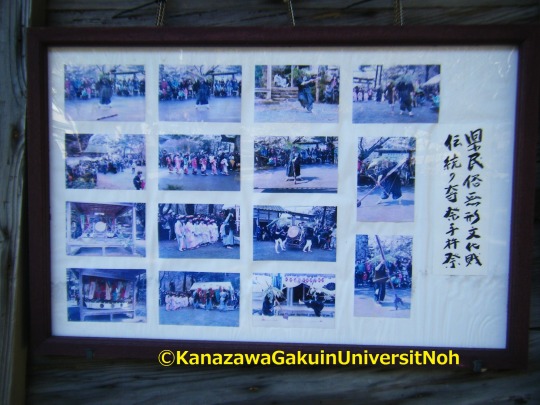
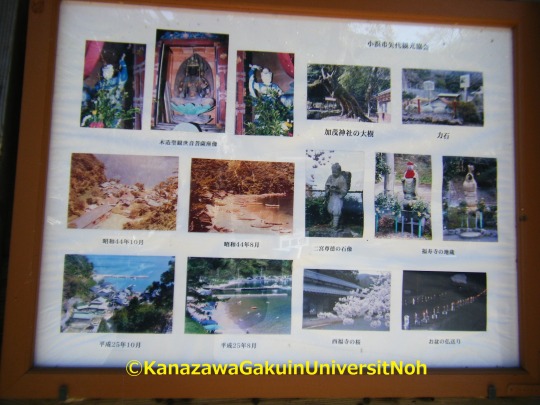
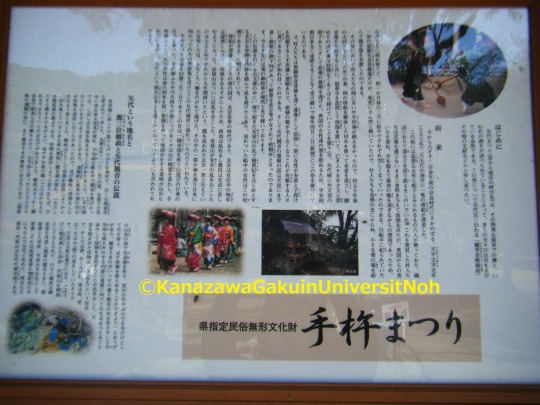
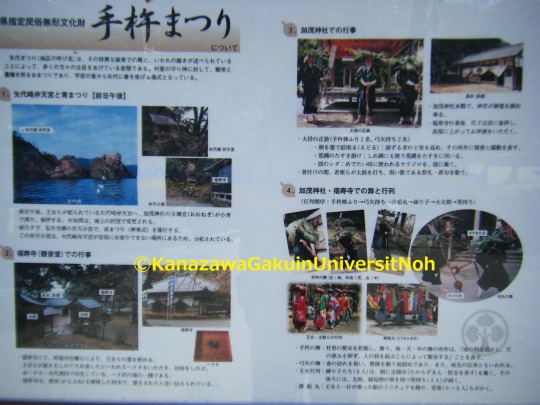
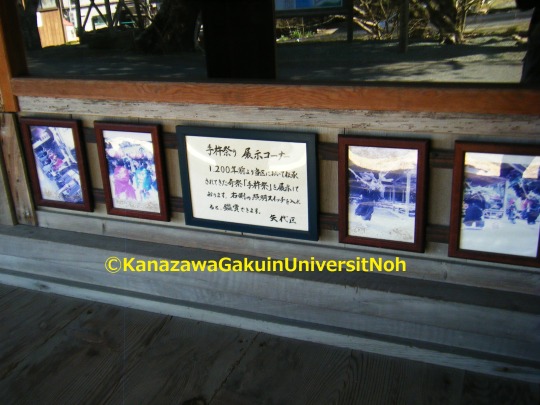
【福井県謡曲古跡めぐり若狭/嶺南編】14箇所目 2021/3/18
能「鵺」「頼政」
観音堂
《福井県小浜市矢代》
真言宗醍醐派。
所在 小浜市矢代10号9番地
本尊 聖観世音菩薩
境内坪数 210坪
堂の建坪 35坪
由緒。当堂ノ創立ハ大同元年丙戊二月ナリ 是ヨり先天平宝字元年丁酉春二月ノ初丿 唐船一艘風波ノ難ヲシノギ萍流浮転シテ遂ニ此海浜ニ漂着ス 土人就テ其国所ヲ訊問スレドモ言語互ニ不通 船中ヲ伺ヒ見ルニ異裝ノ婦女六人品格甚ダ貴嬌ナルヲ覚ユ 男子ト相像スル者二名共ニ咽喉ヲ撫テ食ヲ乞フノ状アリ 土人糧及薪木ヲ給ス 此ニ泊スル事数旬其ノ状土人ヲ試が如ク居ラント欲スル如シ 然シテ村民船中所載ノ貨物ヲ利セソガ為忽チ悪念ヲ起シ 其ノ三月船ニ迫リ終ニ一行ノ人ヲ刺害シテ 所載ノ貨財什器ヲ掠奪スルニ船中扇ヲ設ケテ観世音ノ像ヲ奉スルニ在り 又奪ヒ去ツテ柴ノ庵ヲ造リ之ヲ安置ス 是ヨリ大同元年ニ至ル迄五十年間災厄頻リニ至ルヲ以テ 村民前非ヲ悔悟シ亡霊ヲ招魂スルニヨリ又当堂ヲ創建シテ亡人ノ遺幸セル観世音ノ像ヲ安置ス 実ニ是レ人皇五十一代平城天皇ノ御宇大同元年丙戌春二月也当観世音臨産ノ感験明ナルヲ以テ著名ナリ(以下略)以上由緒は矢代栗駒操 「仏堂礼拝施設存続届」(昭和17年5月30日宗教団体法による届出書)による。
「観音堂 在二矢代浦一 相伝 古此地領主源頼政創建���一説大同年中創建本尊仏白二異域一来者」若狭国志。
「矢代観音堂 矢代浦にあり、頼位山福寿寺と号す、従三位頼政郷此地を領する時之を創建す、本尊は観世音の像なり。一説は大同年中の草創にして本尊は支那より来ると、今世は金谷村万徳寺の僧堂事を司どる」若狭郡県志。
古来稲富浦と称されていたが、従三位源頼政が平治2年(1160)禁庭で怪獣ヌエを射止めた賞として朝廷から稲富を賜わり、その時使用した箭羽が稲富産であったことから、以後稲富を矢代と改称したと伝える。
矢代観音
矢代浦は、もと稲富浦といって、源頼政の領地であった。そのころ高倉天皇はふしぎな病気にかかった。毎晩夜がふけてから、どこからともなく怪物か雲に乗って現われ、御所の上へ来て、天皇を悩ませした。朝廷では源頼政に怪物退治を命じた。
頼政が、どうして怪物を退治ようかと、心をくだいていると、ある夜の夢に観音様が現われ、「わたしはお前の領内の稲富浦にある観音である。お前が怪物を退治しようと思うならば、わたしに願をかけよ。」といった。さっそく領内を調べると、はたして稲富浦に観音堂があった。頼政は大いに喜び、はるばる京都からこの地に来て、観音堂に断食七日の願をかけた。
七日七晩の満願の夜、また観音様か夢に現われ、「山鳥の羽で矢羽を作ったならば、必ず怪物を射とめることができよう。」と告げた。翌朝稲富浦の山中で山鳥を捕えて羽をとり、宮川村の竹やぶで矢竹をとって矢を作り、その矢を射て、みごとに怪物を退治した。
頼政は稲富の観音様にお礼参りをして、稲富の一部と外面(そとも)を観音様に寄進した。これから稲富を矢代と呼ぶようになった。今も宮川村に頼政を祭った堂があり、矢代には頼政の屋敷跡がある。また矢代では山鳥を食べない。
#能楽 #能 #Noh #申楽 #猿楽 #狂言 #風姿花伝 #世阿弥 #芸術論 #幽玄 #歌舞劇 #演劇 #能面 #マスク #文化 #旅行 #トラベル #名所旧跡 #神社 #寺院 #像 #碑 #巡礼 #古跡 #謡曲 #福井 #若狭 #嶺南 #Travel #GoTo #ruins #wreckage #Shrine #temple #samurai #bow #Chimera #弓矢 #キメラ #化物 #武士 #退治 #古典
#Noh#Travel#GoTo#ruins#wreckage#shrine#temple#samurai#bow#Chimera#能楽#狂言#芸術#art#演劇#文化#伝統#旅行#寺院#謡曲#古典#武士#侍#弓#矢#化物#キメラ#退治#福井#若狭
3 notes
·
View notes
Text
ヤングスワロゥ
LYRICS TRANSLATION for the title track of their second CD, Ni-Jikan Me.
Translated name : Young Swallow
Singer : 1st Year Unit Taiga & Toa

All translations are belongs to me, make sure to credit properly if you plans on sharing this! Enjoy reading!
Listen along • google doc • twitter post
阿吽なら 心得てる
aun'nara kokoroe teru
The ones above sure would know what they're doing
いつでも君の 顔色ガン見 AssyMen
itsudemo kimi no kaoiro ganmi AssyMen
I'm always looking at your face, AssyMen
怒られて 嬉しいのさ
okorarete ureshii no sa
Even when offended, it felt pleasant
振るいたたせて 暫時、逢いたい
furuitatasete zanji, aitai
Shaking it off, I wanna meet you for a while
弛緩せず 弁えます
shikansezu wakimaemasu
No slackening off, I try to understand it
飼われてる僕 認められずに MessyMen
kawareteru boku mitomerarezu ni MessyMen
that without being recognized, I'm a kept MessyMen
割勘は 有り得ないよ
warikan wa arienai yo
There's no way that we'll split the cost
財政負担 大人になれば
zaisei futan otona ni nareba
That's a financial burden as we become adults
絵描き(こども)には 分からない
kodomo ni wa wakaranai
The little children do not understand
ソレでも Wow キャワいい
soredemo Wow kyawaii
but still, Wow, so lovely of them
悪い気はしない 飛び立つ覚悟のYoung Swallow
warui ki wa shinai tobitatsu kakugo no Young Swallow
The Young Swallow with no means of evil, preparing to take off
「すきすぎる」
"suki sugiru."
"I loved you too much."
チ・ラ・チ・ラ・ミ・ヱ・テ
chira chira miete
From each glances, I have seen
ド・キ・ド・キ・シ・テ・ル 事後感
doki doki shiteru jigo-kan
the afterthought of this thrill I felt
モトメテヰル
motometeiru
I then seek for them
グ・ラ・グ・ラ・ユ・レ・テ
gura gura yurute
Shaking, and wobbling
ワ・ク・ワ・ク・シ・テ・ル 既視感
wakuwaku shiteru kishikan
from this dejavu of the excitement I felt
スヰヨセラレ
suiyoserare
It attracts me closer
歳の差(せだい)を顕にしないヒトだから
sedai wo arawa ni shinai hito dakara
Because I'm a person who doesn't reveal my generation,
ミナマデヰワナイママニチッスシタ
minamade iwanai mama ni chissushita
I'm not telling this to everyone with a single kiss
油断せず 愛しあえば
yudan sezu aishi aeba
Stay on your guard, and love each other
世間様に 苦しんでいる 二人さ
seken-sama ni kurushindeiru futari sa
The two of us are suffering for the world
誰からも 認められず
dare kara mo mitomerarezu
and not being recognized by anyone
逃げ出したくて 抱き締めている
nigedashitakute dakishimeteiru
I'm holding on to you because I want to get away.
叶わない 想いなら 心に Wow 或るけど
kanawanai omoi nara kokoro ni Wow arukedo
I have a feeling that won't come true inside, Wow, my heart
拠(よりどころ)すら 亡くしたくないよYoung Swallow
yori dokoro sura naku shitakunai yo Young Swallow
I don't even want to lose my ground to hold on, o' Young Swallow
「わかるでしょ?」
"wakaru desho? "
"You know what I mean?"
サ・メ・ザ・メ・ヒ・カ・ル
samezame hikaru
Awakens within the light,
カ・ク・シ・タ・オ・モ・ヰ 静謐
kakushita omoi seihitsu
these feelings that were hidden quietly
カガヤヰテル
kagayaiteru
they shines brightly
ジ・リ・ジ・リ・ヤ・ケ・タ
jiri jiri yaketa
Impatiently they were burnt,
ア・ラ・ユ・ル・カ・ク・ゴ 悲壮感
arayuru kakugo hisou-kan
each of determinations and griefs
ミツケテヰル
mitsukete iru
that I'm looking for
稀代の有り得ない言葉で綴れ
kidai no arienai kotoba de tsuzure
So spell it out in rare and impossible words,
今更言ワナクテモネ恋シタ
ima sara iwanakute mo ne koishita
I don't have to tell you now that I'm in love.
「飛ビ立タナヰデヨネ コノ胸ノ中……」
"tobitatanai de yo ne kono mune no naka…"
"Don't take off yet, this feeling inside my chest…"
「それ以上」
"sore ijou,"
"You don't have to..."
「……言わなくていい」
".....iwanakute ii."
"...say anything else."
チ・ラ・チ・ラ・ミ・ヱ・テ
chira chira miete
From each glances, I have seen
ド・キ・ド・キ・シ・テ・ル 事後感
doki doki shiteru jigo-kan
the afterthought of this thrill I felt
モトメテヰル
motometeiru
I then seek for them
グ・ラ・グ・ラ・ユ・レ・テ
gura gura yurute
Shaking, and wobbling
ワ・ク・ワ・ク・シ・テ・ル 既視感
wakuwaku shiteru kishikan
from this dejavu of the excitement I felt
スヰヨセラレ
suiyoserare
It attracts me closer
ジ・リ・ジ・リ・ヤ・ケ・タ
jiri jiri yaketa
Impatiently they were burnt,
ア・ラ・ユ・ル・カ・ク・ゴ 悲壮感
arayuru kakugo hisou-kan
each of determinations and griefs
ミツケテヰル
mitsukete iru
that we're looking for
稀代の有り得ない言葉で綴れ
kidai no arienai kotoba de tsuzure
So spell it out in rare and impossible words,
今更言ワナクテモネ恋シタ
ima sara iwanakute mo ne koishita
I don't have to tell you now that I'm in love.
—————
#my translates#translation#rock : song tls#ヤングスワロゥ#young swallow#全力少年達のおうた#zenryoku shounen-tachi no outa#umehara yuichiro#saito soma
6 notes
·
View notes

